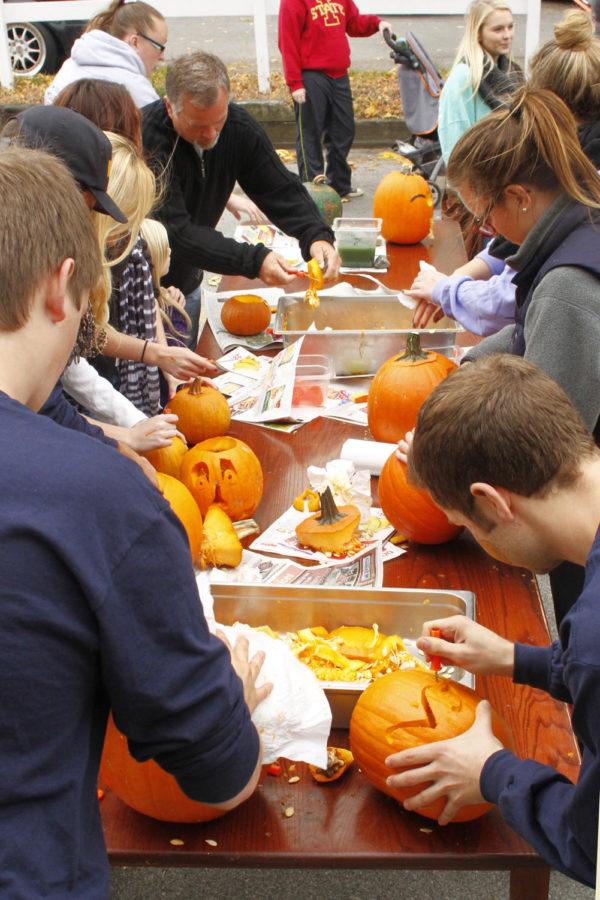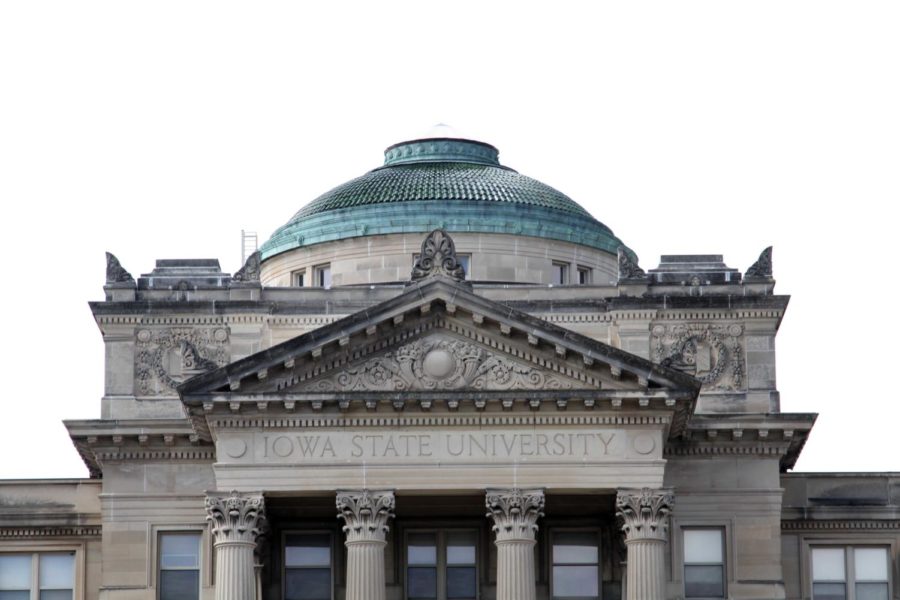Ward: Americans don’t understand Halloween’s history
Family and friends gather around and carve pumpkins on Sunday, Oct. 20, on the Sigma Alpha Epsilon driveway.
October 28, 2014
“On Halloween you must beware, for frightful things are everywhere!” All Hallows’ Eve has been around for centuries, but over the years traditional Halloween has become a shadow of its former self.
The tradition of Halloween originated as a Celtic festival known as Samhain and was celebrated on Oct. 31 to signify the end of the harvest season in the Gaelic culture. This date was selected because it was believed that it was the day that the dead could mingle with the living. It was thought that people who had passed could come back and cause wide-spread illness and damage to the newly harvested crops before the winter months set in. In order to distract the souls, Celts would burn massive bonfires where they would provide offerings of food or animals and wear masks to keep the spirits at bay.
This is also the reason bats are so heavily associated with this spooky holiday. The bonfires would attract large quantities of bugs and therefore cause bats to swarm to try and eat them. Bats are not the only symbol used in modern-day Halloween that is historically rooted. Jack-o’-lanterns were not originally used to decorate houses on Beggars’ Night. In fact a jack-o’-lantern wasn’t even supposed to be made out of a pumpkin.
The most common associated legend is centered around a thief named Jack who was being chased by villagers. On his race through town he met the devil. Jack convinced him to turn into a coin so he could pay the villagers for what he had taken.
After the devil transformed into the coin, Jack put him in his pocket where he also had a cross. That cross stripped stripped the devil of his powers until Jack agreed to set him free. After the devil promised to never drag his soul to hell, Jack freed him. When Jack died he could not go to heaven because of his poor life choices, and he could also not go to hell because the devil kept his word.
The devil tossed Jack an ember from the fires of hell that Jack used it to light a lantern he had carved out of a turnip. He used this lantern to wander the earth for all eternity. Thus he became known as Jack of the Lantern, known today as jack-o’-lantern.
Keep in mind this is a legend, but it does shed an entirely new light on the popular Halloween activity of pumpkin carving. This legend also brings to the table the fact that as a culture we have taken what was once considered a very important holiday in Eastern cultures and turned it into a costume-wearing, candy-consuming free-for-all.
Scottish and Irish immigrants brought the idea of All Hallows’ Eve to North America during the potato famine. It did not take long for the people of this country to entirely abandon the original meaning. The first recorded reference to wearing costumes and going door-to-door begging for treats was in 1911, but this was never a practice of the original Halloween. The term trick-or-treat was widely known by the 1930s.
However, it does slightly resemble the practice of “souling,” which was when the poor would go door-to-door on Hallowmas, Nov. 1 or All Saints’ Day, and pray for the souls of the dead. North Americans took this holistic practice and turned it into a self-serving act of pure gluttony; how very modern-America of them.
As Americans, we have this uncanny gift for taking things that once meant a great deal to a certain religion or cultural group and glossing over its true meaning, and the same sentiment applies for Halloween. Although children get a thrill consuming pounds of candy, to the horror of their parents, and teenagers use the day as an excuse to dress like a slutty cat, perhaps we should remember what Halloween was originally meant for and why it is we are celebrating this day in the first place.
“Hist and hark, draw close and tremble, tis this the night that ghosts assemble.”

















